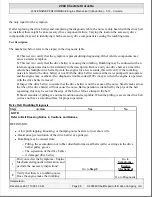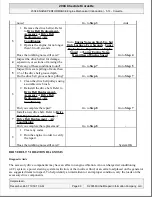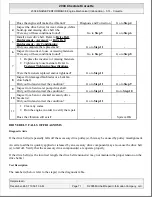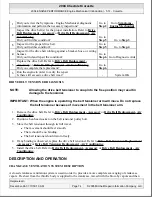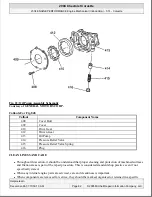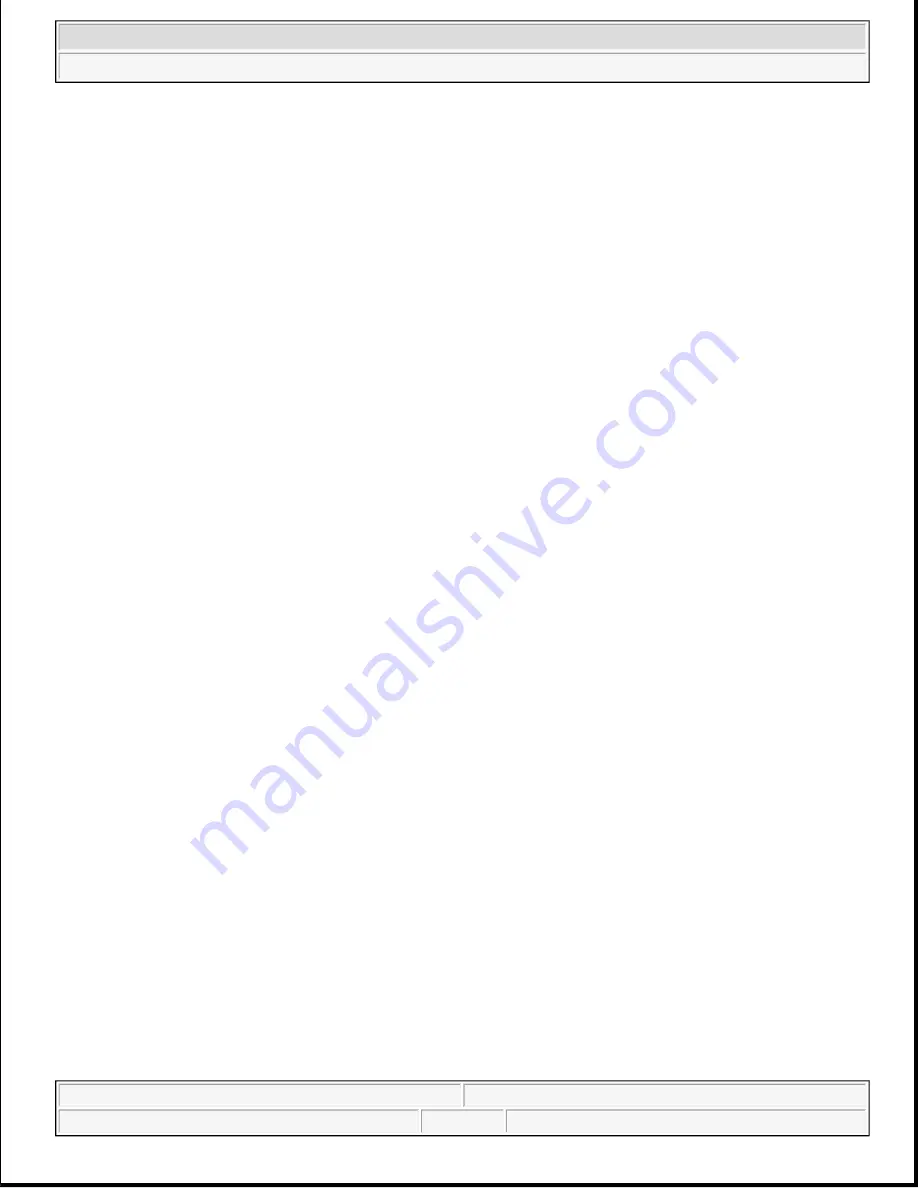
crankshaft position reluctor ring is mounted at the rear of the crankshaft. The reluctor ring is not serviceable
separately.
Cylinder Heads
The cylinder head assemblies are cast aluminum and have pressed in place powdered metal valve guides and
valve seats. Passages for the vapor ventilation system are at the front of each cylinder head. There are no
exhaust gas passages within the cylinder head. Valve rocker arm covers are retained to the cylinder head by 4
center mounted rocker arm cover bolts.
Engine Block
The engine block is a cam-in-block deep skirt 90 degree V configuration with 5 crankshaft bearing caps. The
engine block is aluminum with cast in place iron cylinder bore liners. The 5 crankshaft bearing caps each have 4
vertical M10 and 2 horizontal M8 mounting bolts. The camshaft is supported by 5 camshaft bearings pressed
into the block. First design engine blocks have different drill and tap depths using both medium length 100 mm
(3.94 in) and long 155 mm (6.1 in) M11 cylinder head bolts. Second design engine blocks use only the medium
length 100 mm (3.94 in) bolt with a common drill and tap depth.
Exhaust Manifolds
The exhaust manifolds are a 1-piece cast iron design. The exhaust manifolds direct exhaust gasses from the
combustion chambers to the exhaust system. Each manifold has a single inlet for the air injection reaction (AIR)
system and an externally mounted heat shield retained by bolts.
Intake Manifold
The IAFM or integrated air fuel module is a one piece composite design that incorporates metal threaded inserts
for mounting the fuel rail and throttle body. The intake manifold is sealed to the cylinder heads by eight
separate nonreusable silicone sealing gaskets which press into the grooves of the intake housing. The drive by
wire throttle body assembly bolts to the front of the intake manifold. The throttle body is sealed to the intake
manifold by a one piece push in place silicone gasket. The fuel rail assembly with eight separate fuel injectors is
retained to the intake by four bolts. The injectors are seated in their individual manifold bores with O-ring seals
to provide sealing. A fuel rail stop bracket is retained at the rear of the left fuel rail by the intake manifold
mounting bolts. A snap fit manifold absolute pressure (MAP) sensor housing is mounted at the rear of the
manifold and sealed by an O-ring seal. The MAP sensor is installed and retained to the MAP sensor housing.
There are no coolant passages within the intake manifold.
Oil Pan
The structural 2-piece oil pan assembly has cast aluminum upper and lower halves. Incorporated into the upper
oil pan design is the oil filter mounting boss, oil level sensor mounting bore, and a non-removable oil pan
baffle. The oil pan cover, oil temperature sensor, and oil level sensor mount to the sides of the upper oil pan.
Incorporated into the lower oil pan design is the drain plug opening and internal oil control ribbing. A nylon
carrier with a silicone bead type gasket provides sealing between the upper and lower halves of the oil pan
assembly. The alignment of the structural oil pan assembly to the rear of the engine block and transmission
housing is critical.
2004 Chevrolet Corvette
2004 ENGINE PERFORMANCE Engine Mechanical (Introduction) - 5.7L - Corvette
Helpmelearn
December-24-07 10:50:10 AM
Page 78
© 2005 Mitchell Repair Information Company, LLC.





